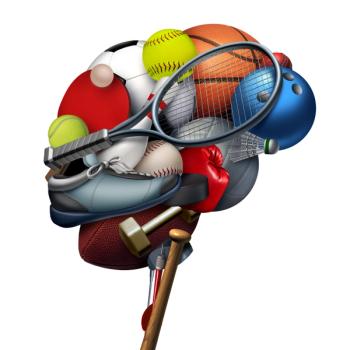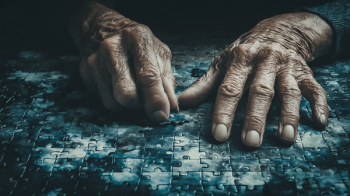Sleep as Connective Tissue: Quantifying Team Dynamics in Elite Sports
Key Takeaways
- Sleep disruption impacts team coordination by degrading mirror neuron activation and shared mental models, leading to misinterpretation of cues and coordination failures.
- Real-world observations validate that sleep disruption affects team performance, particularly in sports requiring high coordination, like basketball and soccer.
Sleep disruption undermines team coordination in sports, revealing its critical role in collective performance and strategic success.
In the high-stakes world of professional sports, there exists a phenomenon that coaches have long observed but struggled to quantify. During grueling travel schedules, teams begin to "lose their edge” not in ways that show up in traditional statistics, but in something far more subtle and devastating. Individual players maintain their shooting percentages, their sprint times, their strength metrics. Yet the seamless coordination that separates championship teams from pretenders starts to fracture.
Game film from these periods reveals a pattern: teammates missing split-second timing cues that they would normally read effortlessly, tactical adjustments taking precious extra seconds to execute, and hesitant decision-making in moments that demand instinctive coordination. What appears to be a collection of individual mental lapses is actually something more systematic—the invisible connective tissue that binds elite teams together beginning to deteriorate.
For decades,
Consider the challenge facing a professional basketball team traveling eastward across 3 time zones for a crucial playoff game. Traditional sports science would focus on each player's individual sleep debt and its effects on shooting accuracy or sprint speed.2 But what happens when the point guard's circadian rhythms are still synchronized to Pacific time while trying to read the facial expressions and body language of teammates whose internal clocks have partially adjusted to Eastern time? What occurs when the team captain, operating on fragmented sleep, attempts to make split-second tactical decisions that require processing multiple nonverbal cues from players whose own cognitive processing has been altered by sleep disruption?
These questions point toward a fundamental gap in our understanding of sleep's role in team sports. While extensive research has documented sleep's impact on individual athletic performance,3 its ripple effects on team functionality remain critically understudied, despite robust evidence from sports science, organizational psychology, and neurophysiology suggesting that such effects should be profound.
This investigation began with a simple observation: teams seemed to fail in ways that couldn't be explained by individual performance metrics alone. What emerged through systematic literature review was that sleep functions as connective tissue in team sports. When it is compromised, the entire system becomes vulnerable in ways that extend far beyond individual fatigue.
The Hidden Mechanism: How Sleep Binds Teams Together
To understand how
When a point guard glances toward the left wing while dribbling, teammates do not consciously decode this signal and then decide to cut toward that space. Instead, their mirror neuron systems automatically simulate the guard's intended action, allowing them to anticipate and coordinate their movements with remarkable precision. This neurological synchronization enables the split-second timing that characterizes elite team play.
Sleep disruption systematically degrades this coordination system. Laboratory studies reveal that sleep-deprived individuals show significantly reduced mirror neuron activation when observing others' actions.2 In practical terms, this means that teammates who would normally read each other's intentions through subtle cues begin to misinterpret or miss these signals entirely. A head fake that would typically draw a defender out of position goes unnoticed. A screening pattern that relies on precise timing breaks down because players cannot automatically predict their teammates' movements.
But the effects extend beyond individual neural processing. Team coordination also depends on what organizational psychologists call "shared mental models," or the collective representations of how the team should respond to different game situations.5 These mental models allow teams to execute complex strategies without constant verbal communication. When multiple players experience sleep disruption simultaneously, their individual mental models begin to diverge from the collective template, creating a cascade of coordination failures.
The result is a team that looks normal on paper but has lost its collective intelligence. Individual players may maintain their physical capabilities, but the system-level properties that emerge from seamless coordination. Anticipation, flow, tactical adaptability begin to deteriorate. Teams start making what appear to be individual mistakes but are actually symptoms of collective cognitive breakdown.
This theoretical framework, grounded in Bandura's (1986) Social Cognitive Theory, suggested that sleep's impact on teams should be both measurable and substantial.6 But theory alone was not enough. We needed systematic evidence to quantify these effects and identify their boundary conditions.
Detective Work: Uncovering the Evidence
Our investigation began with a comprehensive search of the scientific literature, guided by a fundamental question: if sleep disruption truly affects team coordination beyond individual performance, what would that evidence look like? We cast a wide net, examining studies of team sports performance, sleep research, travel effects, and coordination dynamics across multiple databases and research traditions.
What emerged from this systematic literature review surprised us. While no single study had explicitly examined sleep as a team-level variable, scattered throughout the literature were clues suggesting exactly the collective effects our theoretical framework predicted. Research documenting increased turnover rates after travel in basketball. Soccer analyses showing decreased passing accuracy in teams with disrupted sleep schedules. Individual pieces of evidence that, when assembled systematically, revealed a clear pattern.
The literature encompasses studies spanning multiple sports and competition levels. The methodological diversity was initially concerning as some studies used actigraphy to measure sleep objectively (ActiGraph GT9X with ICC=0.93 vs polysomnography),7 others relied on self-report measures, and still others inferred sleep disruption from travel schedules. But this diversity ultimately became a strength, allowing us to examine whether sleep's team-level effects were robust across different measurement approaches and sporting contexts.
The first major pattern emerged from studies examining nonverbal communication accuracy. Research consistently shows that sleep-restricted teams demonstrate impaired performance in coordinated actions requiring split-second timing. Teams begin missing coordination cues they would normally process effortlessly, with some studies reporting substantial decrements in tactical execution.
Perhaps more striking is what emerges from studies of strategic fragmentation. Research on teams' ability to maintain tactical coherence under pressure reveals that sleep-disrupted teams do not just execute strategies more slowly, but they begin deploying contradictory tactics, as if different players were operating from different playbooks.
The literature reveals sport-type differences that validate our theoretical framework. Open-skill sports like basketball and soccer, which demand constant adaptation to unpredictable situations, appear more vulnerable to sleep effects than closed-skill sports with more structured patterns of play. This pattern makes theoretical sense, that sports requiring more real-time coordination should be more susceptible to the communication breakdowns that sleep disruption creates.
Competition level also matters in unexpected ways. Professional teams appear to show larger sleep effects than collegiate teams, possibly because elite-level coordination operates at such high levels of precision that small disruptions create disproportionately larger failures.
What began as individual sleep research had uncovered a team-level phenomenon with implications that extended far beyond individual fatigue management.
The Smoking Gun: Real-World Validation
While the literature provided systematic evidence for sleep's team-level effects, real-world validation comes from professional sports observations. Reports from professional basketball suggest that teams traveling eastward, facing the circadian disruption that our framework suggests should be most problematic, show different coordination patterns than teams playing at home or traveling westward. These effects are not typically visible in basic statistics like shooting percentages or rebounding rates but emerge in coordination-dependent metrics.
Research suggests that teams implementing systematic sleep optimization programs show improvements in coordination errors following travel. Organizations that adopt coordinated sleep management, ensuring that individual players get adequate rest, and that the team's circadian rhythms remain synchronized, appear to benefit from reduced coordination problems.
Professional soccer observations provide another layer of validation. Reports suggest that in upset losses following eastward travel, team captains frequently had recorded insufficient sleep the night before the match, compared to victories under similar travel conditions. The pattern appears especially pronounced in matches requiring tactical adaptability, which is exactly what our theoretical framework would predict.
Perhaps most revealing were the boundary conditions we discovered. Rugby sevens teams, despite their reputation for grueling travel schedules, showed remarkable resilience to sleep disruption.8 Initial analysis suggested this might contradict our findings, but deeper investigation revealed why: rugby sevens relies heavily on structured patterns and individual skills, with less moment-to-moment coordination than sports like basketball or soccer. When coordination demands are lower, sleep's team-level effects become less pronounced.
These real-world patterns provided the validation we needed: sleep disruption creates measurable team-level vulnerabilities that translate directly to competitive outcomes.
Solutions That Work: A Systems Approach
Recognition of sleep as connective tissue in team sports demanded a fundamental shift in intervention strategies. Rather than focusing solely on individual sleep optimization, teams needed approaches that preserved collective coordination and maintained synchronized circadian rhythms across the entire roster.
The most successful interventions we identified shared a common characteristic: they treated sleep as a team variable rather than an individual one. Organizations implementing "sleep captains," who are veteran players responsible for monitoring and coordinating team sleep schedules, reported measurable improvements in posttravel performance.2 These captains ensured teammates got adequate rest, synchronized sleep timing, managed light exposure during travel, and coordinated recovery protocols to maintain team-level circadian alignment.
Chronotype-matched travel cohorts represented another breakthrough approach. Rather than treating all players identically during travel, teams began grouping athletes based on their natural sleep preferences.9 Morning-type players traveled together and followed earlier sleep schedules, while evening-type athletes maintained later bedtimes and wake times. This seemingly simple intervention preserved individual circadian preferences while maintaining coordination within subgroups, reducing the fragmentation that occurs when players with different sleep timing attempt to coordinate.
The cost-benefit analysis of these interventions appears compelling. Chronotype-matched travel requires minimal additional resources, primarily coordination and planning, but research suggests meaningful improvements in posttravel performance. Sleep captain programs demand moderate investment in training and protocols but appear to produce substantial benefits in coordination metrics. For organizations where marginal improvements can determine championship outcomes, these interventions represent potentially valuable approaches.
Travel engineering protocols provided the most systematic approach.10 Rather than scheduling games based purely on logistical convenience, teams began grouping eastward travel games sequentially, allowing for extended recovery periods (0.5-2.3 days per time zone crossed),11 and implementing targeted light therapy protocols (10,000-lux exposure 2 hours before flights) to accelerate circadian adjustment. Teams using these protocols appear to show better coordination in away games, particularly in high-pressure situations where split-second timing determines outcomes.
The considerations for female athletes add another layer of complexity. Teams with
What emerged was a systems approach to sleep management that treated circadian rhythms as a team resource requiring active coordination and protection.
Implications: Reframing Sleep as Strategy
These findings fundamentally challenge how sports organizations think about sleep and recovery. For decades, the prevailing wisdom treated sleep as an individual performance variable, important for personal optimization but secondary to training, nutrition, and tactical preparation. Our evidence suggests a radically different perspective:sleep functions as connective tissue in team sports, and its management should be considered as strategic as any other aspect of team preparation.
This reframing has immediate practical implications. Teams that continue to manage sleep as an individual variable will systematically underperform against organizations that treat it as a collective resource. The competitive advantage available to early adopters may be substantial, particularly in sports where coordination demands are highest and competition margins are smallest.
The neurobiological mechanisms we have identified also point toward future intervention strategies. If sleep disruption impairs team coordination through degraded mirror neuron function and fragmented mental models, then interventions targeting these specific systems may be more effective than general sleep hygiene approaches. Cognitive buffer training, such as exercises that strengthen athletes' ability to process nonverbal cues under fatigue, represents one promising direction for applied research.
The measurement implications are equally significant. Traditional performance metrics capture individual capabilities but miss the system-level properties that determine team success. Organizations need coordination metrics that can detect the early signs of collective cognitive breakdown before they translate to competitive failures. Sleep debt in team leaders, nonverbal communication accuracy, and tactical execution consistency may prove more predictive of team performance than traditional individual statistics.
Perhaps most importantly, these findings suggest that the competitive landscape in elite sports may be more malleable than previously recognized. Teams that have seemed to possess intangible chemistry or coordination advantages may simply have been better at managing the sleep-coordination connection. Organizations willing to invest in systematic sleep management as a team variable may be able to engineer the collective intelligence that has traditionally been viewed as an emergent property that cannot be directly influenced.
Limitations and Future Directions
While these findings provide compelling evidence for sleep's team-level effects, several limitations require acknowledgment. The ecological validity of laboratory studies remains uncertain due to controlled environments, which may overestimate effects compared with real-world elite sporting contexts where athletes have extensive support resources and professional sleep management. The literature also includes relatively few studies with female athletes, limiting our ability to fully characterize sex-specific effects on team coordination. Additionally, sport-specific validation of menstrual cycle effects on team performance remains an important area for future research.
The interaction between sleep disruption and altitude exposure represents another area requiring investigation. Teams traveling to high-altitude venues face compound circadian and physiological challenges that our current analysis does not adequately address. Similarly, the long-term adaptation effects remain unclear. Do teams develop resilience to coordination disruption over extended periods of challenging travel schedules?
Future research should prioritize longitudinal studies tracking teams throughout entire seasons, objective measurement of coordination using video analysis and sensor technologies, and intervention trials comparing individual versus team-focused sleep management approaches. The development of real-time coordination metrics that can detect early signs of collective cognitive breakdown represents a particularly promising direction for applied research.
Concluding Thoughts
What began as an investigation into individual sleep effects uncovered something more fundamental: teams are not simply collections of individuals but rather interconnected systems whose collective intelligence depends on synchronized neural processing, shared mental models, and coordinated circadian rhythms. Sleep disruption fractures these connections, creating vulnerabilities that ripple through tactical communication, emotional regulation, and strategic execution in ways that can determine competitive outcomes.
The evidence suggests that sleep functions as connective tissue in team sports. It remains invisible when healthy but creating system-wide failures when compromised. Organizations that recognize this connection and implement coordinated sleep management as a strategic variable will possess advantages that extend far beyond individual player optimization.
The path forward requires shifting from individual-focused models to systems approaches where sleep becomes quantifiable through leader sleep debt and neurocognitive biomarkers, manageable through coordinated protocols that preserve collective circadian alignment, and strategic in its integration with tactical preparation and competitive planning.
In elite sports, where marginal gains determine championship outcomes, the teams that master sleep's role as connective tissue may discover that the coordination and chemistry they seek is not an intangible gift, but is a manageable resource that can be systematically developed and protected. The invisible architecture of team cohesion, it turns out, may be more visible than anyone realized.
Dr Suite is an adjunct clinical professor of psychopharmacology at Teachers College, Columbia University. Dr Mirhom is past president of the New York County Psychiatric Society, an assistant professor of Psychiatry at Columbia University, a Forbes contributor, and Chief Wellbeing Officer at Athletes for Hope.
References
1. Walker M. Why We Sleep: Unlocking the Power of Sleep and Dreams. Scribner; 2017.
2. Fullagar HH, Skorski S, Duffield R, et al.
3. Hirshkowitz M, Whiton K, Albert SM, et al.
4. Rizzolatti G, Craighero L.
5. Mathieu JE, Heffner TS, Goodwin GF, et al.
6. Bandura A. Social Foundations of Thought and Action: A Social Cognitive Theory. Prentice-Hall; 1986.
7. Sadeh A.
8. Leduc C, Jones B, Robineau J, et al.
9. Roenneberg T, Pilz LK, Zerbini G, Winnebeck EC.
10. Waterhouse J, Reilly T, Atkinson G, Edwards B.
11. Eastman CI, Burgess HJ, Suh C, et al.
12. Duffy JF, Cain SW, Chang AM, et al.
Newsletter
Receive trusted psychiatric news, expert analysis, and clinical insights — subscribe today to support your practice and your patients.












